PHOTOGRAPHY MONOGRAPHS
|
|
STATUS: Forthcoming | 2/3/2026 This title is not yet published in the U.S. To pre-order or receive notice when the book is available, please email orders @ artbook.com |
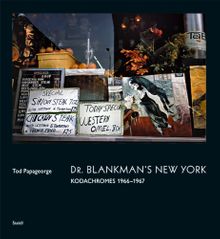 Tod Papageorge: Dr. Blankman’s New York
Tod Papageorge: Dr. Blankman’s New York
Kodachromes 1966–1967
Published by Steidl.
Text by David Campany.
Tod Papageorge (born 1940) produced the photographs for Dr. Blankman’s New York in 1966–67, on the heels of moving into the city. Photographer friends persuaded him that he could help pay the rent by landing some magazine assignments, and that a carousel tray of slides would be the best way of convincing art directors to take a chance on him. So, often after spending a day in the streets photographing in black and white, he would put a roll of Kodachrome film in his camera on his walk home and make color pictures, in many cases of shop windows.
This reissue of Dr. Blankman’s New York, first published by Steidl in 2017, has enlarged the size of the plates and, with one exception, condensed the original design to a series of double spreads, intensifying the sense that what Papageorge was doing in these photographs was elaborating, on a parallel track, the portrayal of Manhattan presented in the black-and-white work of Down to the City, the first volume of his War and Peace in New York (also published by Steidl).
PUBLISHER
Steidl
BOOK FORMAT
Clth, 10.75 x 11.75 in. / 72 pgs / 62 color.
PUBLISHING STATUS
Pub Date 2/3/2026
Forthcoming
DISTRIBUTION
D.A.P. Exclusive
Catalog: SPRING 2023 p. 18
PRODUCT DETAILS
ISBN 9783969990629 TRADE
List Price: $50.00 CAD $70.00
AVAILABILITY
Awaiting stock
STATUS: Forthcoming | 2/3/2026 This title is not yet published in the U.S. To pre-order or receive notice when the book is available, please email orders @ artbook.com |
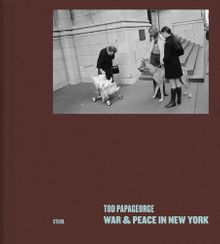 Tod Papageorge: War & Peace in New York
Tod Papageorge: War & Peace in New York
Photographs 1966–1970
Published by Steidl/Galerie Thomas Zander.
This publication comprises two books of pictures Papageorge made after moving to Manhattan as a young man. As different as they are from one another—each book advances a distinct argument supporting Papageorge’s belief in photographic “fiction-making”—together they amount to a comprehensive portrait of an uneasy city during a grim, fevered time.
Down to the City follows (and ironically twists) the first sentences of Plato’s Republic, threading phrases from Socrates’ description of a religious festival through a stream of pictures seized in Manhattan’s secular streets. This novel-like flow builds the sense of a place haunted by dystopian disorder, which is amplified late in the book when the war in Vietnam takes center stage, clarifying the tensions leading to that moment.
The Dear Common Round traces a softer arc. Here the actions and exchanges that a city’s people make in the streets thousands of times a day are photographically honored simply and directly, as if the style of picture-making, at least initially in the book, had reverted to the first days of hand-camera photography. This changes as the sequence progresses, but for all its increasing visual and narrative complexity, The Dear Common Round holds true to the promise of its opening: this is a city sweet, if serious, at its heart, built to belong to and cherish.
Tod Papageorge was born in Portsmouth, New Hampshire, in 1940, and began photographing during his last semester of college before graduating with a degree in English literature in 1962. His work has been widely exhibited and is represented in over 30 major public collections. Steidl has published Papageorge’s Passing Through Eden: Photographs of Central Park (2007) and Dr. Blankman’s New York (2018).
PUBLISHER
BOOK FORMAT
Slip, clth, 2 vols, 10.75 x 12 in. / 368 pgs / 290 bw.
PUBLISHING STATUS
Pub Date 2/3/2026
Forthcoming
DISTRIBUTION
D.A.P. Exclusive
Catalog: SPRING 2021 p. 19
PRODUCT DETAILS
ISBN 9783958298934 SDNR40
List Price: $300.00 CAD $400.00
AVAILABILITY
Awaiting stock
STATUS: Forthcoming | 2/3/2026 This title is not yet published in the U.S. To pre-order or receive notice when the book is available, please email orders @ artbook.com |
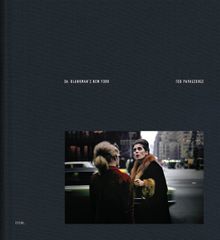 Tod Papageorge: Dr. Blankman´s New York
Tod Papageorge: Dr. Blankman´s New York
Published by Steidl/Pace/MacGill Gallery.
Text by David Campany.
Tod Papageorge (born 1940) picked up photography for the first time as a student at the University of New Hampshire. He is the recipient of two Guggenheim Fellowships and two National Endowment for the Arts Fellowships. From 1979 to 2013 Papageorge served as Yale University’s Walker Evans Professor of Photography and Director of Graduate Study in Photography.
PUBLISHER
Steidl/Pace/MacGill Gallery
BOOK FORMAT
Hardcover, 11.75 x 12 in. / 136 pgs / 60 color.
PUBLISHING STATUS
Pub Date 11/20/2018
Out of print
DISTRIBUTION
D.A.P. Exclusive
Catalog: SPRING 2016 p. 74
PRODUCT DETAILS
ISBN 9783958291089 TRADE
List Price: $45.00 CAD $62.00
AVAILABILITY
Not available
STATUS: Out of print | 00/00/00 For assistance locating a copy, please see our list of recommended out of print specialists |
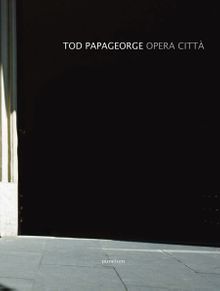 Tod Papageorge: Opera Città
Tod Papageorge: Opera Città
FotoGrafia 2010 Rome Commission
Published by Punctum.
Essay by Marco Delogu.
PUBLISHER
Punctum
BOOK FORMAT
Hardcover, 6.25 x 8.5 in. / 48 pgs / 21 color.
PUBLISHING STATUS
Pub Date 7/31/2011
Active
DISTRIBUTION
D.A.P. Exclusive
Catalog: SPRING 2011 p. 166
PRODUCT DETAILS
ISBN 9788895410241 TRADE
List Price: $62.00 CAD $82.50
AVAILABILITY
In stock
in stock $62.00 Free Shipping UPS GROUND IN THE CONTINENTAL U.S. |
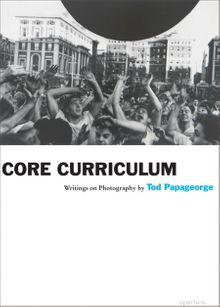 Core Curriculum
Core Curriculum
Writings on Photography
Published by Aperture.
By Tod Papageorge.
Tod Papageorge (born 1940) earned his BA in English literature from the University of New Hampshire in 1962, where he began taking photographs during his last semester. He is the recipient of two Guggenheim Fellowships and two National Endowment for the Arts Fellowships. In 1979, Papageorge was named Yale University's Walker Evans Professor of Photography and director of graduate studies in photography, both positions he continues to hold today.
PUBLISHER
Aperture
BOOK FORMAT
Flexi, 6 x 8.5 in. / 208 pgs / 3 color / 33 bw.
PUBLISHING STATUS
Pub Date 7/31/2011
No longer our product
DISTRIBUTION
Contact Publisher
Catalog:
PRODUCT DETAILS
ISBN 9781597111720 TRADE
List Price: $29.95 CAD $35.00
AVAILABILITY
Not Available
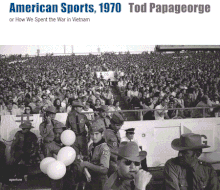 Tod Papageorge: American Sports, 1970
Tod Papageorge: American Sports, 1970
Or How We Spent the War in Vietnam
Published by Aperture.
Papageorge eloquently and palpably captures the civic and psychic distress of the time on the faces of his subjects and in their gestures and interactions. This is a remarkable, unexpected body of work--published here for the first time--by an artist and teacher who has shaped the creative efforts of many of the most influential American photographers of the past three decades.
PUBLISHER
Aperture
BOOK FORMAT
Hardcover, 11.75 x 10 in. / 128 pgs / 75 tritone.
PUBLISHING STATUS
Pub Date 1/1/2008
No longer our product
DISTRIBUTION
Contact Publisher
Catalog:
PRODUCT DETAILS
ISBN 9781597110501 TRADE
List Price: $50.00 CAD $60.00
AVAILABILITY
Not Available

